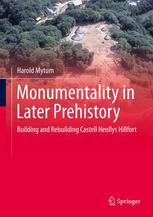

Most ebook files are in PDF format, so you can easily read them using various software such as Foxit Reader or directly on the Google Chrome browser.
Some ebook files are released by publishers in other formats such as .awz, .mobi, .epub, .fb2, etc. You may need to install specific software to read these formats on mobile/PC, such as Calibre.
Please read the tutorial at this link: https://ebookbell.com/faq
We offer FREE conversion to the popular formats you request; however, this may take some time. Therefore, right after payment, please email us, and we will try to provide the service as quickly as possible.
For some exceptional file formats or broken links (if any), please refrain from opening any disputes. Instead, email us first, and we will try to assist within a maximum of 6 hours.
EbookBell Team

4.3
88 reviewsThis volume provides the results of a 30-year excavation, reconstruction, and public interpretation campaign at the late prehistoric inland promontory settlement of Castell Henllys, here focusing on the defensive sequence and the role of monumentality in later prehistory. The site has international significance because of the extensive excavations of the Iron Age palisaded settlement and later earthen ramparts, complex gateway, and chevaux-de-frise of upright stones. It is now widely recognised that the Iron Age consisted of many regional cultural traditions, and the excavations at Castell Henllys provide a vital contrast to the well-known large hillfort communities in other parts of England and Wales as well as across Europe. As such, it is a unique window into a widespread but largely ignored site category and form of social and economic organisation. The publication will provide a case study for the construction and use of the earthworks of a major European late prehistoric settlement type – the Iron Age hillfort; the monumental construction is compared with other communal investments such as the Mississippian mounds. It will also offer an innovative form of site reporting, including alternative interpretations of the earthworks as either military defences or the community-binding symbols. Along with Excavation, Experiment and Heritage Interpretation: Castell Henllys Hillfort Then and Now, these books will be required reading by those studying the late prehistoric archaeology of Britain and Europe at advanced undergraduate and postgraduate level, and by those in North America studying complex societies, monumentality and ways of writing archaeology.